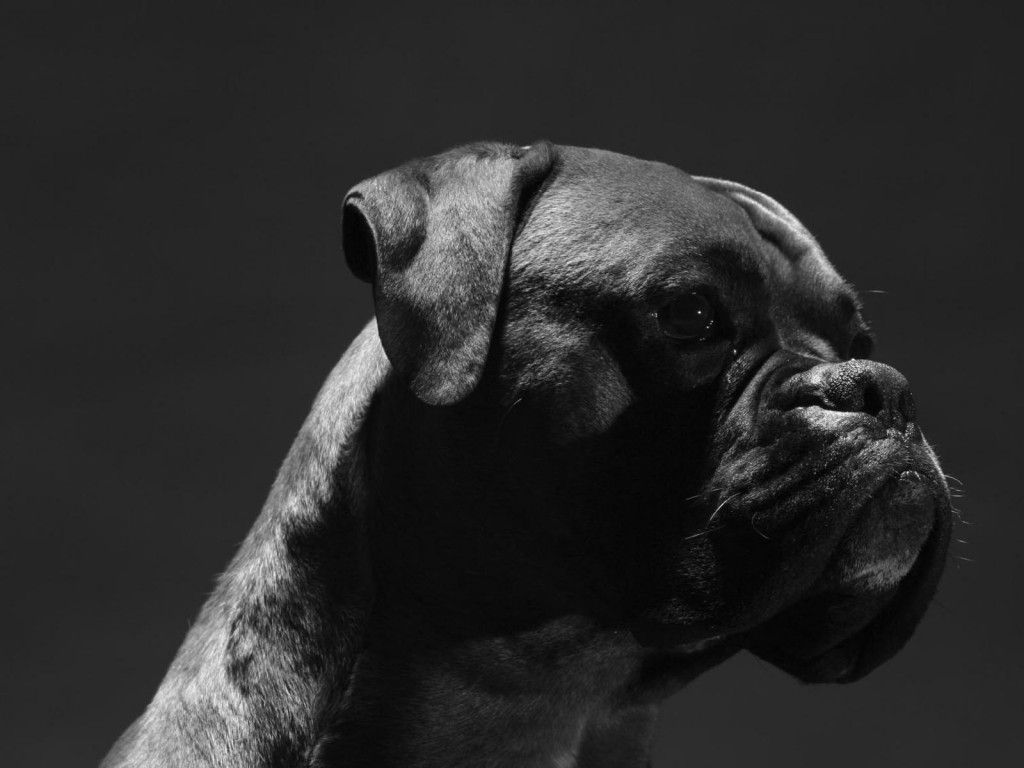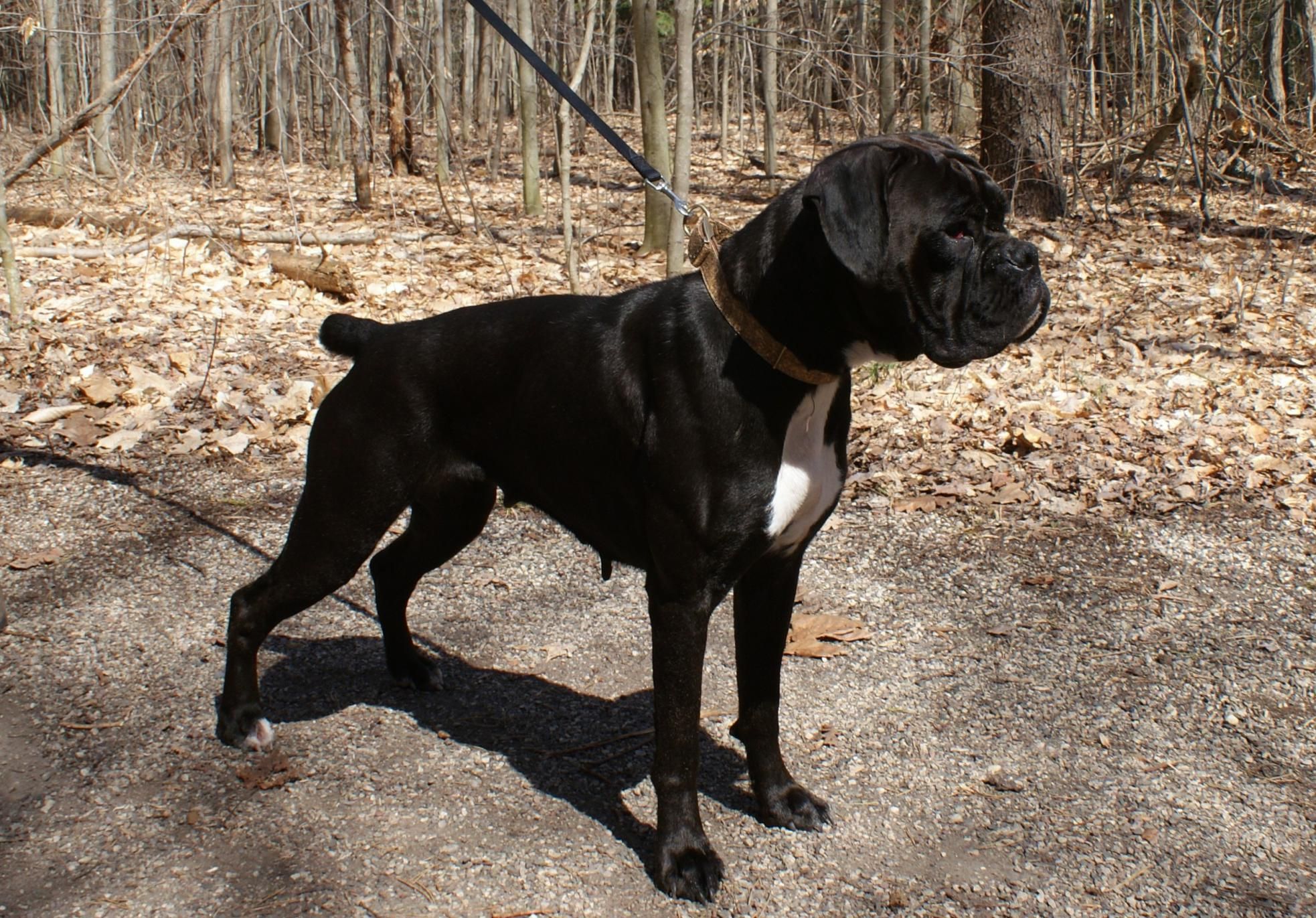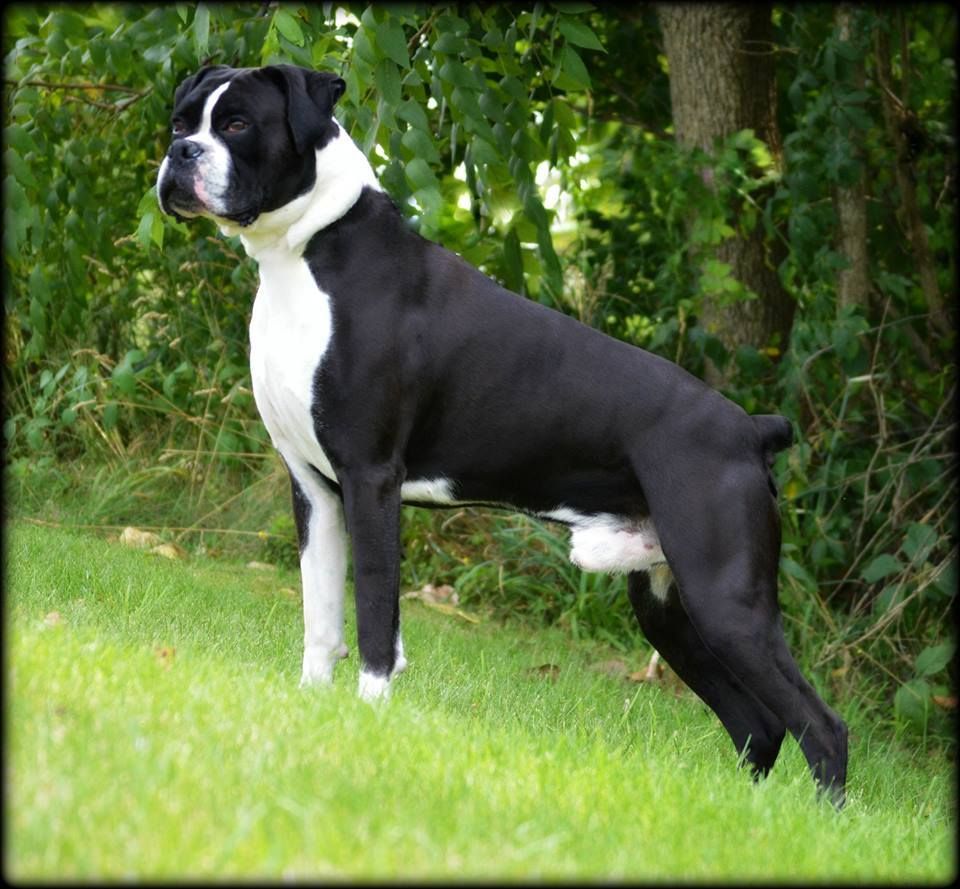
There’s a lot of discussion of black Boxers dogs. Some prospective buyers may search for this breed however, their search is not fruitful.
It can be difficult to believe when you look at photos of black boxers, but they aren’t real. The color gene that is responsible for the black coats does not exist in the breed. When you “see” the black Boxer If the dog is a purebred Boxer then he is likely to be a dark brindle.
The Brindle pattern is one that has color. It is an effect of striping. For the majority of brindle Boxers, the dark stripes appear to be affixed to a fawn background. But it is not the case with Boxer dogs who seem to be sporting a dark coat it is because of super thick reserve brindling. In reality, it could appear so black and thick that you can’t discern any fawns beneath it.
The dog will have the appearance of a dark coat, which is indeed black.
We’ll look at the details a little more to explain the reason why black doesn’t exist in the breed. We’ll also discuss some myths that circulate about this assumed coat color.
Why Colors are Misinterpreted
It’s very easy to observe an animal and instantly believe that he’s colored a particular way according to the visual information your eyes give you. However, for certain breeds, such as the Boxer, for instance, you have to be sure to look twice.
It’s not always until you understand how brindle could create an effect that creates an initial impression that is black that it begins to become clearer.
Additionally, certain Boxers are also given the name of black. However, it is often the case that this is a shorter term that is derived from a longer “black brindle”.

The primary color of all purebred Boxers is Fawn. Brindles are actually fawns with a brindle mark.
These markings are an outline of fur that is made of black striping that covers the face… There are times when it is it’s just slightly (lightly brindled) or sometimes more (a very brindled pet).
Black Boxer and white flash? Nope! Your eyes are tricking you. This puppy is an extremely dark reverse brindle that has white markings.
There are many who wonder if it was possible that there existed black Boxers which were mostly bred out of line and that occasionally the dog sporting a black coat is seen in someplace. But, if we go back at the records of the last century, we will find that this was not the situation. In the 100-year time period, the black Boxer was seen once, but there’s a catch to this.
In Germany of the 1800s, in the late 1800s, a Boxer was joined by an emaciated dog that is part Bulldog as well as a Schnauzer. The resultant litter was littered with pups with black coats. Because a different breed had been introduced in the bloodline they weren’t purebreds. The dogs were not used in any other breeding and, therefore, had no influence on genetics in the future.
Sometimes there are breeders who claim that they have Black Boxers and will use this incident that occurred which was long ago as proof that black indeed runs through the bloodline. But since the mixed dogs that had black coats were not used in any development program, this isn’t true.
Another factor that proves that this coloring doesn’t occur within this Boxer range is the standard that was established by the Munich Boxer Club created in 1925. The group was able to exert strict supervision over breeding as well as the development of Boxers in Germany and also established guidelines for conformity, standard and other aspects of appearance and coloring.
The group was not in the mood for any experiments to be conducted that could introduce black as a color and to prevent this, they established the clear decision that black Boxers were not to be used.
Some argue that the programs could have gotten around this rule and tried to breed black Boxers. But it would not have been in their best interests to do so. Furthermore, the dogs that were born could not have been members of the Munich Boxer Club since they weren’t registered there.
This means that dog that was hypothetical could not have been genetically included in the bloodline of the Boxer since they would be excluded from any program that was creating and perfecting the breed.
So, we are aware:
- This color is not present in the line
- The sole record of a Black Boxer in the past century was a mixed dog, and not purebred
- Rules and regulations that are strict the club in Munich which formed the foundation of the modern-day Boxers clearly prohibited the black Boxers…
It is also reasonable to declare:
- The likelihood of finding some rare, odd gene mutation that introduces black coats is extremely unlikely; mathematically the odds are low that it is impossible to rule this out.
- Black Boxer puppies cannot be born because of a secret gene. This is because black is the dominant color over other shades. It’s not recessive; it always prevails in the same way as other colors.
What is the reason why some are insisting they don’t know this color exists?
This brings us to the conclusion that there are only two options in this case:
- A true black Boxer can’t be purebred. There has to be a different breed that is in the bloodline
- The Boxer isn’t black, and is actually a heavily brindled dog , or reverse brindle

What About Breeders Who Claim to Have Solid Blacks?
It is very likely that breeders with little experience with litters of dark pups, simply refer to them black dogs.
A breeder who is not ethical could intentionally mislead in order to create the impression that they have special breeds that are rare. In the case of this, it will be used to market the puppies at a greater price.
Any puppy purchased and then verbally stated as a black Boxer is not legally recognized as the breed.
There are three organizations: AKC (American Kennel Club), FCI, (Federation Cynologique Internationale) which has more than 80 member states, KC (the Kennel Club of the UK), the CKC (Canadian Kennel Club) and other legitimate canine registration associations do not allow black Boxers to register. Their registration documents do not include the color code available as an option. So, even if a person claims verbally that the breed of Boxer to be black in coat, that dog in the event of registration by a recognized organization will be officially a different color and likely be brindle. Because the dog would be given to the new owner with papers which state that he’s non-black, what do they claim to be a black Boxer dog?
With this in mind If the Boxer was found to have registration papers that proved the presence of a black jacket, those papers must be from a lesser-known club that was not well-known or they would need to be made. Of course, this is extremely unethical.
In Summary
Every creature (whether it’s an animal, such as humans, dogs and so on.) is born with genes. The genes control everything about the individual from the color of skin to the number of legs, to the location where the eyes are…genes determine everything.
Genes control coat color in dogs, too. To be able for dogs to have black coats that breed must have the gene responsible to have a coat that is black. Boxer dogs do not possess this gene. Therefore, there can’t ever be black Boxer dogs. Genetically, it is impossible.
A Boxer that is black (or true black, with brown points for instance, must have a mix breed, or be heavily brindled.